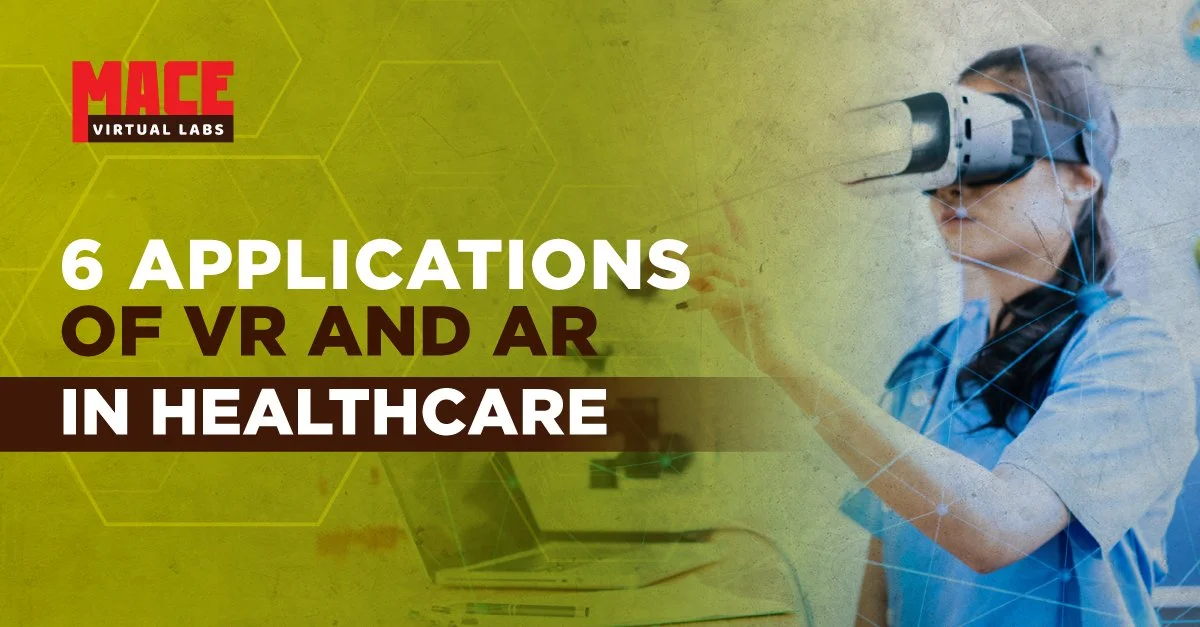6 Applications of VR and AR in Healthcare
The future is bright for commercial applications of virtual reality (VR) and augmented reality (AR). You’ll see these systems in countless industries before long, but one field that these technologies will entirely transform is healthcare. In fact, the shift towards VR and AR in healthcare has already begun.
Early steps towards combining virtual/augmented reality with the medical field have been promising, with benefits ranging from improved medical education to more effective treatment of patients. Here are six notable applications of VR and AR in healthcare–and what you can learn from them right now.
Augmented Reality in the Cath Lab
According to Philips, cath labs are just one medical facility that AR and VR technology could completely reimagine. Philips is working with Microsoft on AR systems meant to help clinicians access the data they need when they need it. Once these systems and others gain widespread adoption, medical experts will have the ability to check crucial information without stepping away from their patients to look at a monitor.
One exciting application of AR in cath labs involves what Philips calls a “digital twin”–that is, a 3D model of a patient’s heart. Clinicians wearing AR headsets can closely examine this digital twin, simulate possible heart surgery outcomes, and make adjustments as needed.
Since augmented reality is a nascent technology, AR systems for cath labs still have a long way to go. Even after these systems become more advanced than their current incarnations, the healthcare field usually takes its time adapting to new technologies. Still, it’s not too challenging to picture a future where AR systems are considered standard equipment in cath labs.
Virtual Reality in Physical Therapy
For patients recovering from everything from amputations to heart surgeries, physical therapy can play an indispensable role in helping them get back to total health. Unfortunately, it comes with some barriers to access, including the need for people to schedule and attend regular appointments.
VR may very well provide a solution to this problem. In its June 2021 issue, the journal OTA International published an article about an experimental, VR-based physical therapy program that included training, exercise games, and progress tracking. The patients who tested the program gave their experience an average rating of 7.5/10, which suggests that VR programs could be a viable option for physical therapy in the future.
Virtual Reality for Psychological Treatment
So far, you’ve had a chance to learn how VR and AR can assist people with physical ailments. However, these technologies are just as effective for helping people deal with mental health issues.
Exposure and response prevention therapy is one of the most effective treatment methods for patients suffering from phobias, PTSD, and many other mental health problems. This method involves exposing patients to what they fear in a controlled environment to help them gradually become better at coping.
Unfortunately, this isn’t always as easy as it sounds. After all, how can you safely expose people to war zones, poisonous animals, and other legitimately dangerous sources of distress? More and more often, the answer is virtual reality: immersive simulations of these threats can offer all the benefits of exposure and response prevention therapy without the risks.
AR and VR in the Operating Room
If you’re performing a highly sensitive surgical procedure, “good enough” isn’t good enough. Surgeons have to be unerringly precise when doing their job. That means they need all the information they can get–including details from AR/VR systems.
The possibilities of AR and VR in the OR are endless. While some surgical AR applications may look similar to those in development for cath labs, these technologies are also being used in other ways. For example, a program from Sync AR gives surgeons “X-ray vision” with augmented imagery from a microscope. And while this may all sound like science fiction, that’s not the case. The first surgery that made use of AR technology took place in 2013.
Augmented Reality and Robotics
Successful surgery requires a steady hand, but sometimes, the steadiest hand is no hand at all. Today, robots can provide surgeries that are minimally invasive and which can offer surprisingly short recovery times.
These robots are far from autonomous, so surgeons need to understand how to operate them. Learning on the job isn’t a realistic option when people’s lives are on the line, making VR-based training an attractive choice for people looking to understand the ins and outs of robotic surgery.
During virtual training, medical students can get a feel for operating robotic surgery equipment while getting valuable feedback whenever they make a mistake.
A Trusted Partner
These are merely a few ways that virtual reality and augmented reality could enhance medical facilities like yours in the future–and, in some cases, how these technologies are already transforming healthcare. Still, you can’t successfully implement commercial VR/AR without access to high-quality equipment. That’s doubly true in the medical realm, where the reliability of these systems could literally be a life-or-death matter.
Instead of taking your chances with a technology company that does a little bit of everything, your best bet is choosing a dedicated VR/AR provider like MACE Virtual Labs.
MACE VL focuses on providing virtual/augmented reality systems to commercial clients, along with the software and training. Moreover, they provide fleet management so your organization doesn’t have to worry about the upkeep and maintenance of the equipment. It’s time to invest in the future of healthcare–do it with a partner you can trust.

